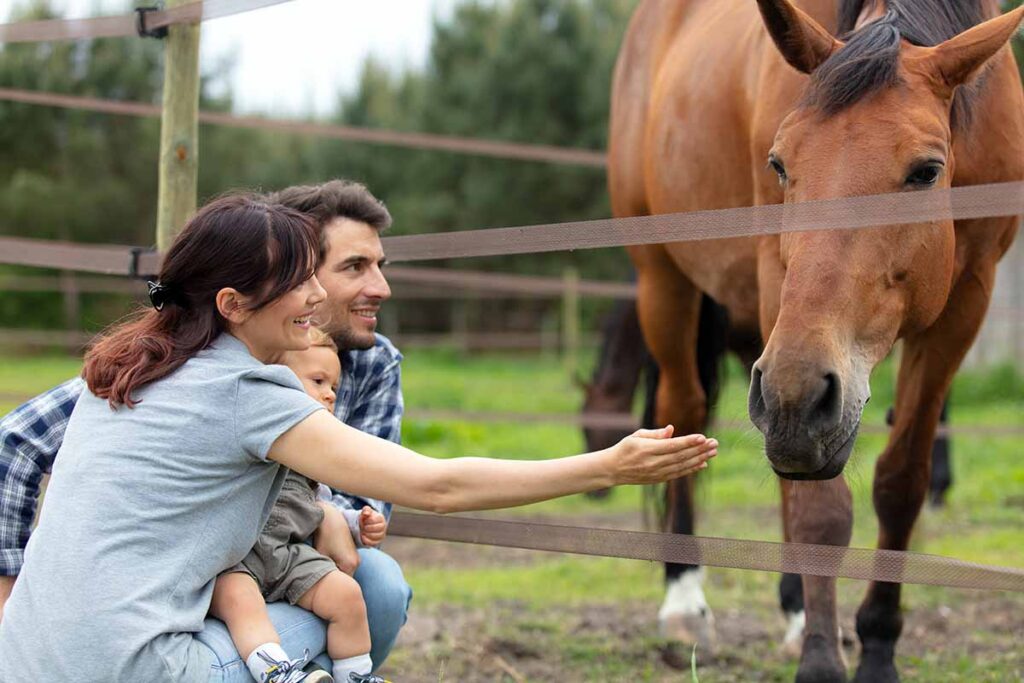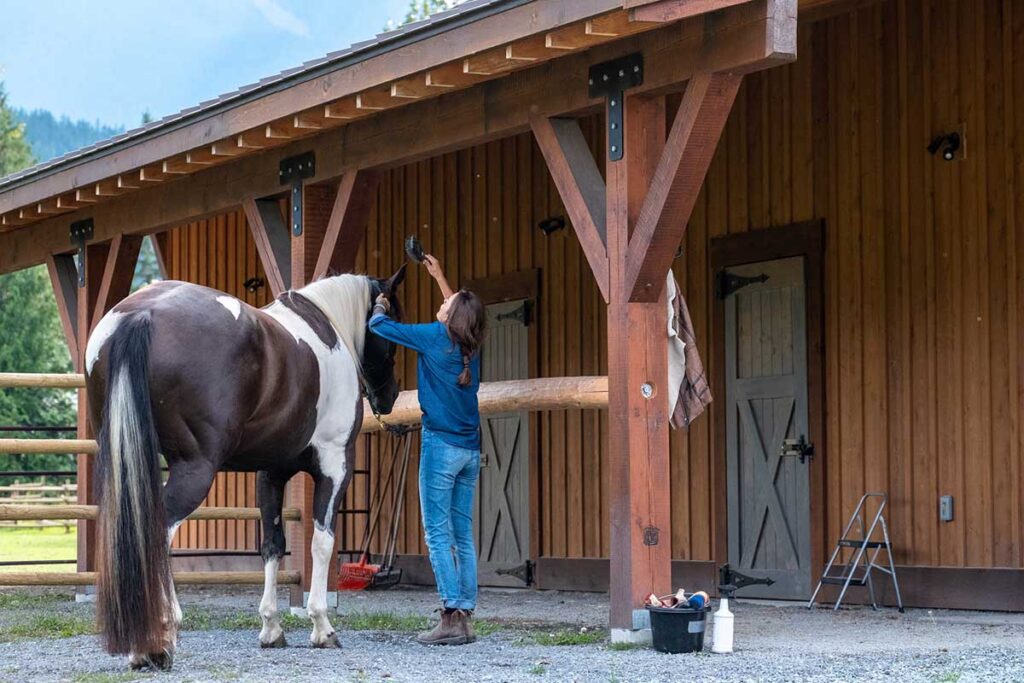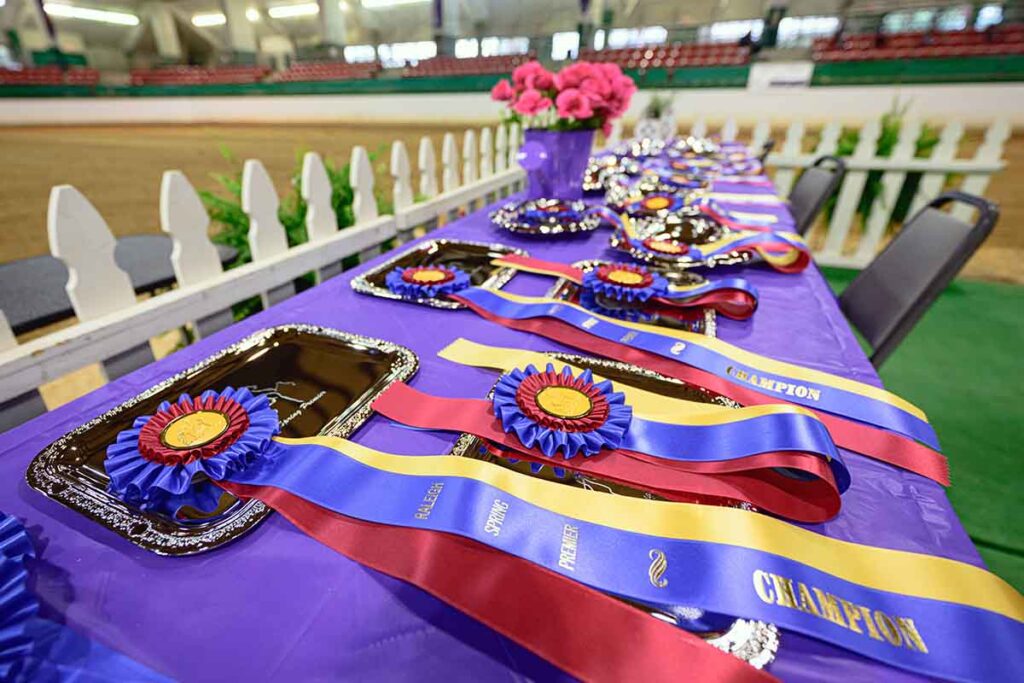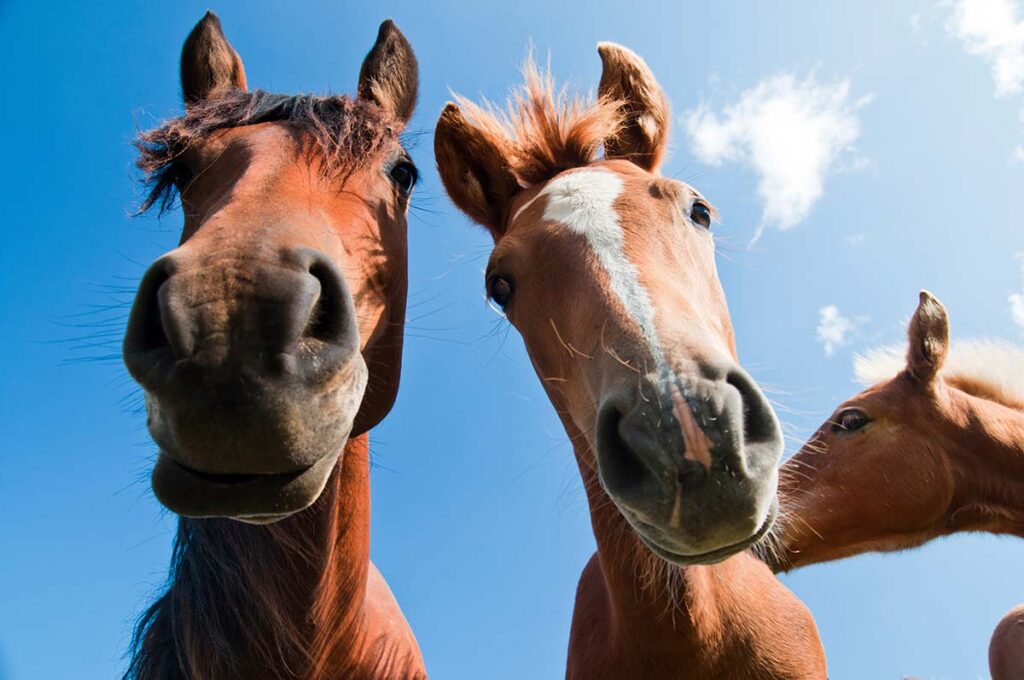Choosing between the two main horseback riding disciplines—English and Western—can be a bit overwhelming for newbies wanting to get into horses or take their first riding lesson.
The most obvious difference between the two is the tack, particularly the saddle. Each type of saddle has a seat and accessories designed specifically for that type of riding and the job that horse will be doing.
For example, the Western saddle was originally made for riders who would be spending long hours in the saddle working cattle. English originated with a completely different type of riding in mind: fox-hunting.
While the subdisciplines of both English and Western riding have changed over the years, the overall balance and design of the saddle and how the horse is ridden in that saddle remain essentially the same.
Choosing Between English and Western Riding Disciplines
When choosing between English and Western, consider what type of subdisciplines interest you. While it might not matter as much as a beginner rider, as you advance in your riding and consider competing, you will find yourself needing to choose a subdiscipline.
A subdiscipline is the specific type of riding you can do within the broader English or Western disciplines.
English and Western Subdisciplines
Both English and Western riding have many subdisciplines. However, here are a few of the most popular:
English
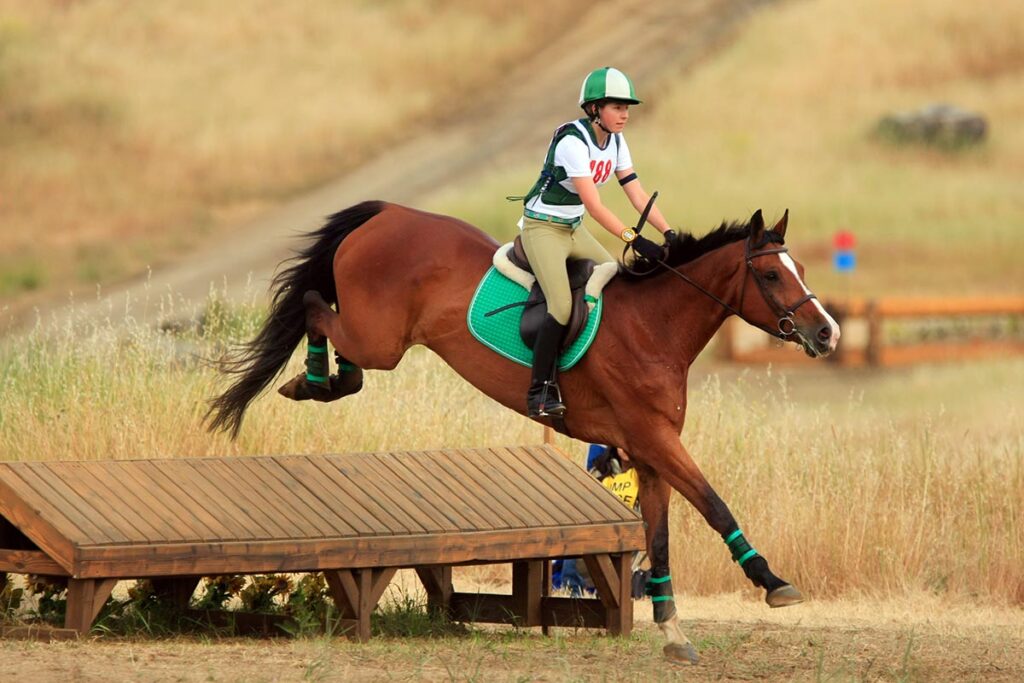
Show-jumping: Show-jumping involves navigating your horse over a series of jumps or obstacles. The height of the jumps varies for each division and level. If the horse refuses a jump or knocks it down, you receive penalty points. The overall goal is to have the fastest time with the least number of faults.
Hunters: Hunter divisions mimic fox-hunting—from which they originated—to test horses’ attributes and suitability for that activity. Hunter classes can be on the flat or over natural courses of eight to 10 jumps and are judged on the horse’s quality of movement, demeanor, and overall performance. Hunters should have a smooth and quiet way of going.
Dressage: Dressage is kind of like ballet on horseback. Horse and rider demonstrate seemingly effortless communication as they perform different patterns, called dressage tests, at various gaits within a small, white-fenced area marked by letters.
Eventing: Eventing is typically a multi-day (although it can be all in one day) discipline where show-jumping (called stadium jumping in eventing), dressage, and cross-country (a long jumping course over natural obstacles) phases make up the overall score to determine the winner of each division.
Western
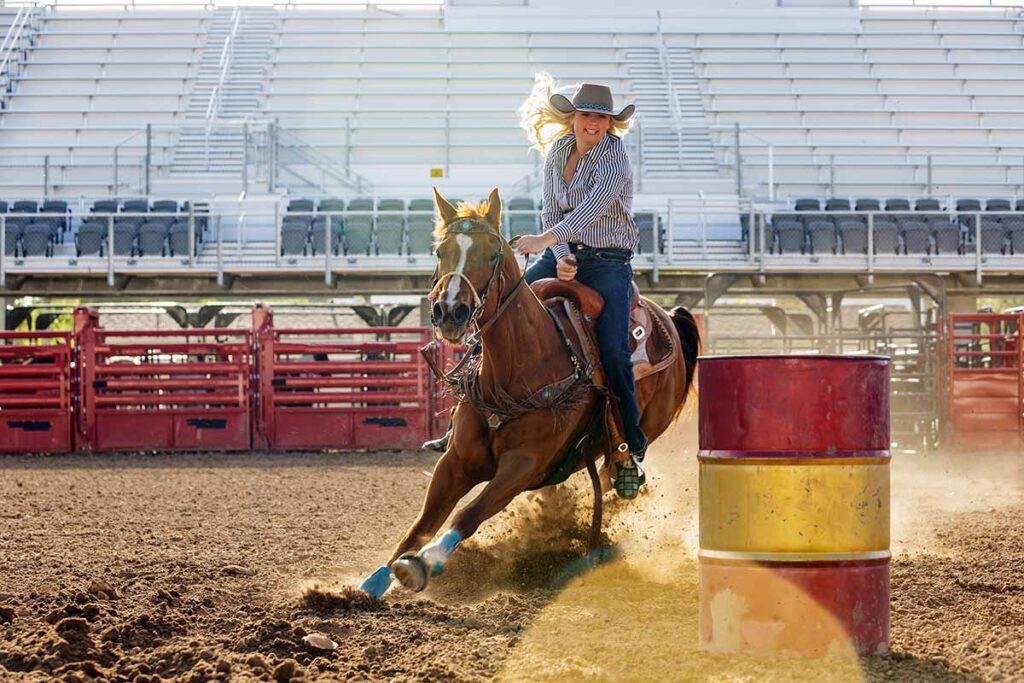
Reining: Reining involves the rider guiding the horse through a pattern in an arena and performing moves such as circles, turns, spins, and sliding stops.
Barrel Racing: In this sport, horses run around three barrels arranged in a set pattern. The horses must make it around each barrel closely at high speeds without knocking it over. To compete in barrel racing, you and your horse require speed and accuracy.
Ranch Riding: Ranch riding classes test a horse’s versatility and ability to perform the type of tasks asked of them on a working ranch. Modern-day ranch riding occurs in an arena, where a judge assesses horse-and-rider pairs’ ability to complete set patterns and maneuvers.
Western Pleasure: Riders compete simultaneously in an arena. A judge asks them to collectively walk, jog, lope, and back up in both directions. The judge evaluates horse-and-rider pairs on the quality of their movement while traveling on a loose rein.
Multi-Disciplines
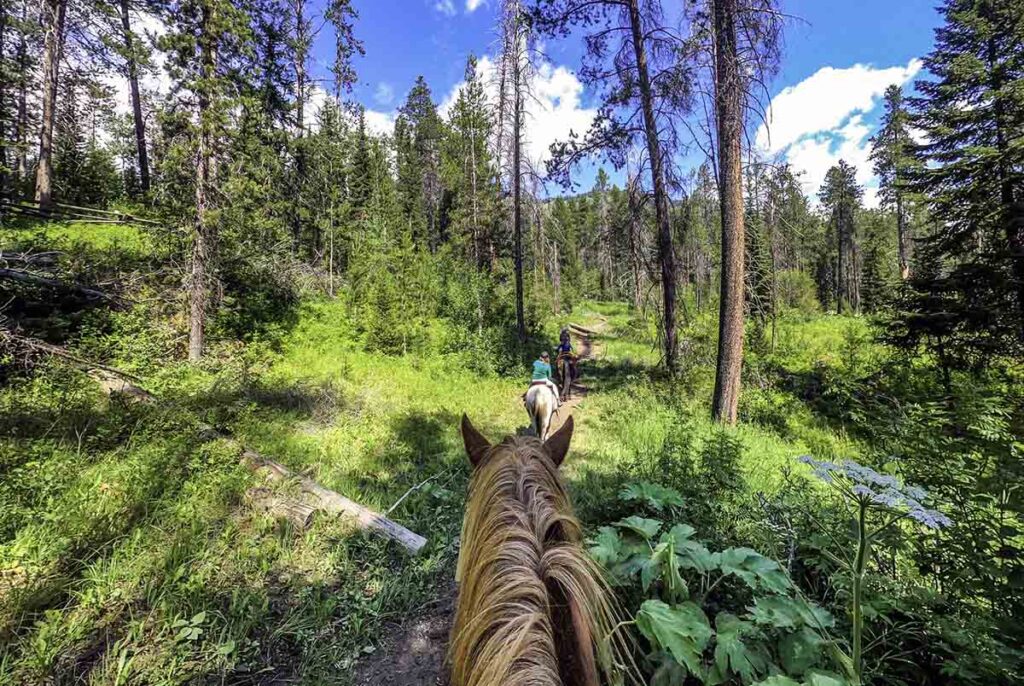
Some riding disciplines don’t fall neatly under the Western or English umbrellas. These horse sports might appeal to riders who like variety or a more casual type of riding:
Trail Riding: Trail riding is a popular option for recreational equestrians who enjoy riding out in nature and building a partnership with their horse. Some trail organizations even host competitions where riders are judged on their ability to navigate a series of obstacles along the route. Trail riding can be done in any type of saddle, though many riders prefer using a Western saddle because it is more comfortable for longer rides.
Hunter Paces: Similar to trail riding and fox-hunting, hunter paces are lightly competitive events where small teams ride through miles of trails and fields with the option to jump a number of natural obstacles. To win, they must cross the finish line together closest to the optimum time of their division (slow, moderate, or fast). Most paces allow riders to use either English or Western saddles.
Endurance: Endurance is a long-distance race that, as the name suggests, tests the strength and stamina of horse and rider as they traverse miles of varied terrain. Veterinarians evaluate the horses at the beginning of the ride and at different checkpoints to ensure they are fit to continue the course. Most riders choose comfortable and practical endurance-specific saddles that resemble either English or Western saddles, depending on the brand.
Switching Disciplines
If you change your mind down the road, there’s no reason you can’t switch between Western and English disciplines. However, if you spend time researching each discipline and subdiscipline before making a decision, you might pinpoint your ideal horse sport right off the bat.
Each type of saddle offers a completely different riding experience. The types of horses you’ll find in the English and Western disciplines also differ. The way you hold your reins, where your leg falls on the horse, and many other factors will be harder to adjust to if you decide to switch disciplines at some point.
To make sure you choose the best riding discipline for your skills and interests, take a few lessons with trainers in each sport to see what you gravitate toward.
Related Reading: Saddle Up: A Guide to Different Types of Riding Horses
Sarah Welk Baynum attended Otterbein University for Equine Business & Facility Management and has spent many years working various jobs in the equine industry, including as a veterinary technician. Sarah is a Columbus, Ohio-based freelance writer and published equestrian fiction author. She also actively competes in show jumping and eventing with her two mares: a spicy Warmblood named Tilly and an equally spicy OTTB named Letty.


